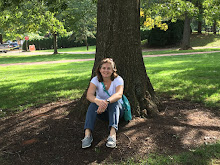This week felt more conceptual and less hands-on than the focus on Maker culture last week. What I most enjoyed was the ways of thinking about how to design environments and tasks that lead to engagement with powerful ideas.
One idea that really resonated with my work was that of building micro-worlds. In the course of building things powerful ideas emerge. I felt like we saw this with our work with electronic environments. Creating circuits in the context of environments and stories led to thinking about things more systemically and seeing connections between technology, design, tinkering, inventing and de-bugging our creations. I noticed some students were more confident with building environments while others were more focused initially on getting the lights and motors to work. Either way they came to a place where a balance had to be reached between a reasonable circuit that could work reliably on a small scale and a representative environment. Story became a strong component in many creations as well.
See videos of some or our electronic micro-worlds below:
The other BIG IDEA that really resonated for me was the one of having learners participate in both the form and the content of learning. The example given was from that a child hunting a squirrel is copying both the form and content of his father hunting an antelope. A girl in a nurses uniform holding a stethescope is mimicing the form of nursing but not the content. She looks the part but is not participating in caring, the content.
This really resonated for me with art education and highlights why student choice is key. A student in a classroom painting with a style and topic prescribed by the teacher may have the tools and look the part of an artist but it is not authentic participation in the content of the role. A student needs to engage in idea formation, choice of subject, material and expression in order to participate in both the form and content of art-making in a studio. This is why TAB Choice classrooms are so rich - they offer children the opportunity to practice both the form and content of the role of an artist in a studio.
Read more about TAB Choice here:
http://teachingforartisticbehavior.org
Teaching for Artistic Behavior - Choice-based Art Education focuses on helping children develop the habits of artists in their authentic engagement with materials, techniques and ideas. Part of this is the challenge of sometimes getting stuck. Through making things students explore ways to get unstuck in different situations. Powerful ideas emerge from deeper thinking about one's artistic process.
This also led to rich discussion of learning communities and the interchangable roles of teacher and learner. One can learn a great deal through teaching and you develop a relationship by learning from another so that in rich learning communities the learning experience is much deeper than just the topic taught. The amount I learn from students is one of my favorite things about my work in the studio.

No comments:
Post a Comment